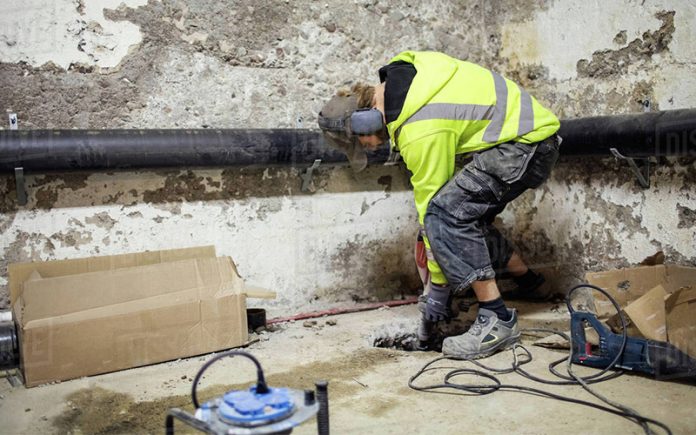Sump pumps can save your house from the troubles of flooding and rainwater, and the unwanted wet and moldy environment in your basement. In times of needs, a rightly installed sump pump can save your day. Crawl space sump pump installation is not a difficult task. However, it requires a bit of planning and proper execution. If you are planning to install a top-quality sump pump in your basement or crawl space, you have come to the right place. You alone can do a crawl space sump pump installation without any mistakes if you have no problem with getting your hands dirty.
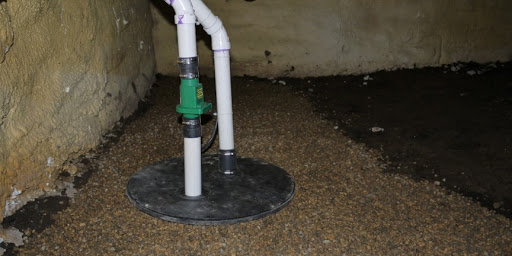
In this article, we are going to provide you with a complete step-by-step sump pump installation guide. So, let’s get started.
What Causes a Wet Crawl Space?
Before installing your sump pump, it is essential to inspect your basement or crawl space where you intend to install the pump. The inspection is necessary to find out the main reasons for which your basement is getting flooded or molded regularly. Some common causes of such problems are:
- The surface of the basement is lower than the groundwater level
- No proper drainage system or blocked channel
- Condensation of water from humidity in the air
- Defects in plumbing
- Lack of barrier between soil and surface to prevent moisture
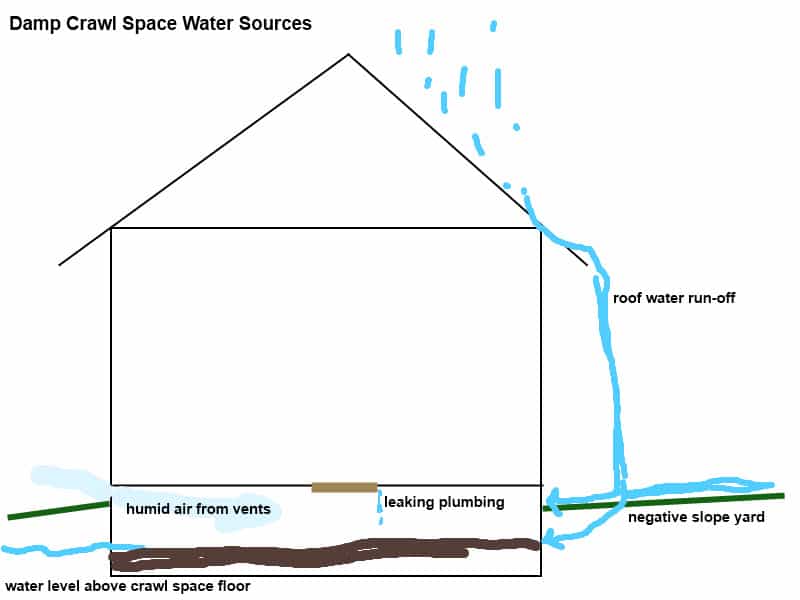
It will be wise to identify the root causes and take necessary actions to eliminate those problems. In this way, you can get the ultimate utility from your sump pump in the future.
Required Tools and Materials
Sump pump installation doesn’t require too many tools and materials. But installation techniques of different types of sump pumps are slightly different from each other. We will describe the most generic so you can work your way out with any type of pump. List of material and tools for the job is given below:
Materials:
- 1 Submersible Sump Pump (it is the best option for a crawl space)
- 20 Gallon Sump Basin
- Sump Basin Cover
- One way PVC Plastic Check Valve
- Drain Tile Pipe
- 1 ½” PVC Pipe
Tools:
- Shovel, rake and similar tools for digging the sump basin, trench drain
- Hole saw to cut PVC pipes and sump basin
- Tools and glue for attaching PVC pipes
- Hammer drill for digging a hole for PVC pipe into the wall. If you don’t have hammer drill, any impact driver or drill will do the job.
Sump Pump Installation Guide
Step 1: Prepare the crawl space
Make your crawl space ready for installation. Remove any trash, old lumber or any other undesired thing from there. You would also want to clear the path for accessing the crawl space for further convenience.
Step 2: Choose a good spot for sump basin
Survey the space for picking a good spot to dig a sump basin. Usually, you should pick the lowest surface point for digging the sump basin. The watermark left on the wall is a good point to notice in this regard. You should also pick the correct spot to dig a tunnel for the draining system which will be connected to the basin.
Step 3: Preparing the sump basin
The next step is to prepare the sump basin with the submersible sump pump. At first cut some holes with the saw into the 20-gallon basin. These holes will function as the water’s entrance way to the basin. Make sure that the holes are fit for attaching the drain tile pipes. Using drain tile pipes is not mandatory though. But for practical reasons, it is much safer and more efficient to use drain tile pipes with a covered basin rather than using an open sump basin.
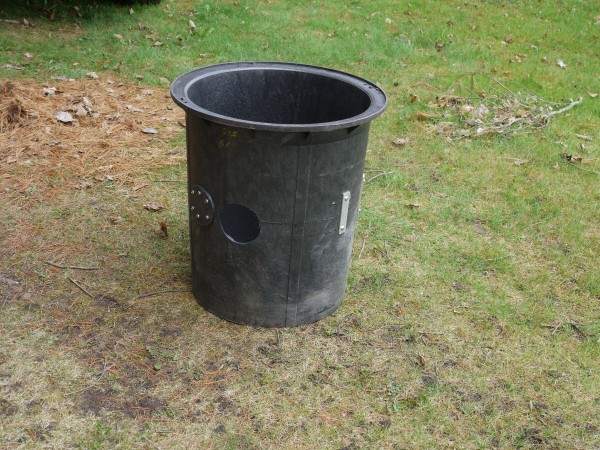
Now get the submersible sump pump or any sump pump of your choice and attach a male PVC threaded adapter to it. This adapter will connect the PVC pipeline through which water will flow out. Then take measures to cut the PVC pipe which will be attached to this adapter. The other end of the PVC pipe should be 5 or 6 inches higher than the lid of the sump basin.
Then cut a hole through the lid of the sump basin with a 2-inch hole saw. The excess part of the PVC pipe will rise through this hole. After this, your sump basin and the pump will be ready to be assembled. However, this will depend on the open space available in your crawl space. If you have enough space to maneuver, you can assemble the basin at this point and then set it in the pit. But if there is not enough space in your crawl space to move in the complete basin (which is very common for most houses), you can cut the sump basin half as depicted in the picture below. You can connect them together later in the pit with the help of glue and aluminum stainless steel strips.
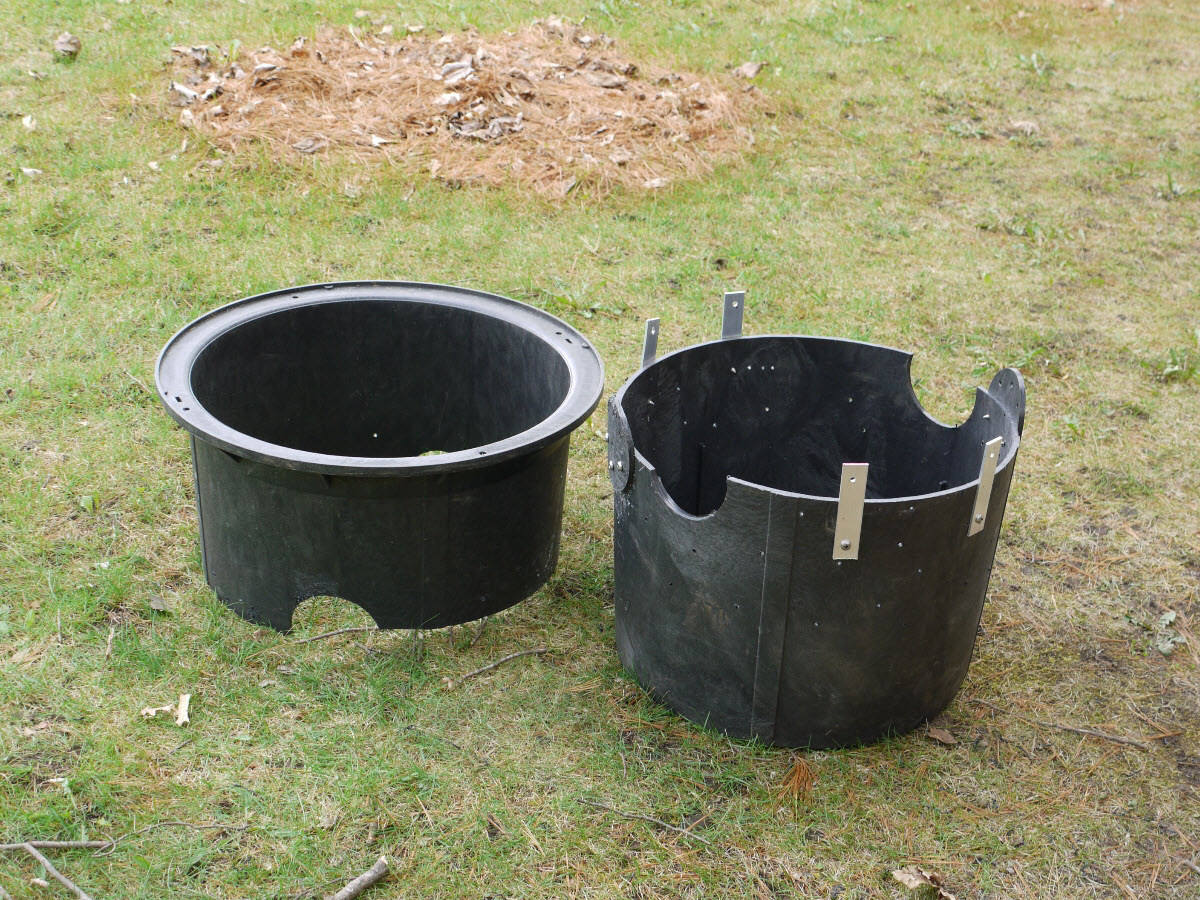
Step 4: Prepare the Pit with Tunnel
It’s time to dig the sump pit. The measurement of the pit should be maintained carefully in such a way which would be wide enough to adjust the basin. However, if the pit is too wide, then it will be hard to work around since it will be unstable. After digging the pit, you should dig the drain tunnel for the drain tile pipes. It will help the water passage. Remember to slope the drain tiles in the crawl space sump pump basin’s direction.
Step 5: Install the Sump Basin & Drain Tile Pipe
In this stage, you are all set to install the sump basin and drain tiles. At first attach the PVC pipe you have cut, with the pump. Now place the sump basin into the pit and drain tile into the tunnel. Then set the pump into the basin and cover it with the basin lead. Now bury the basin with a mixture of small and large aggregates. Don’t worry if dirt will fall into the basin because you can clean it up later.
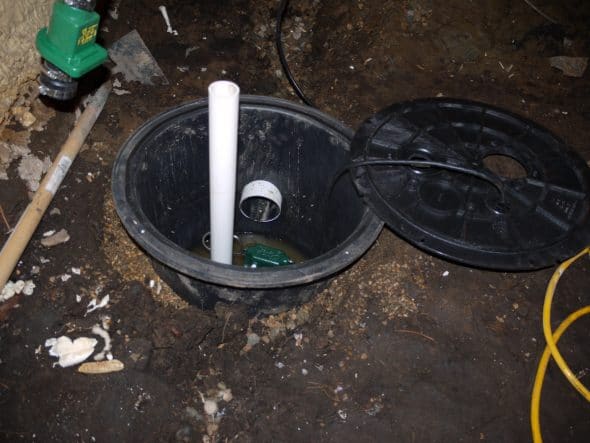
Step 6: Attach the Check Valve
Now attach the one-way PVC check valve with the other end of the PVC pipe connected with the sump pump. This valve will ensure that water flows only in one direction. You want to point the direction from the pump to outside.
Step 7: Install the Plumbing Vent & Power Cord
Your sump pump installation is almost done. It’s time to connect the sump pump with plumbing vent and power cord. The plumbing vent pathway can be easily created by making a pathway for PVC pipes through the wall by a hammer drill. After that, you can direct the vent line to your desired place. Now connect the power cord with the pump. There is a hole in the basin’s lid for the power cord.
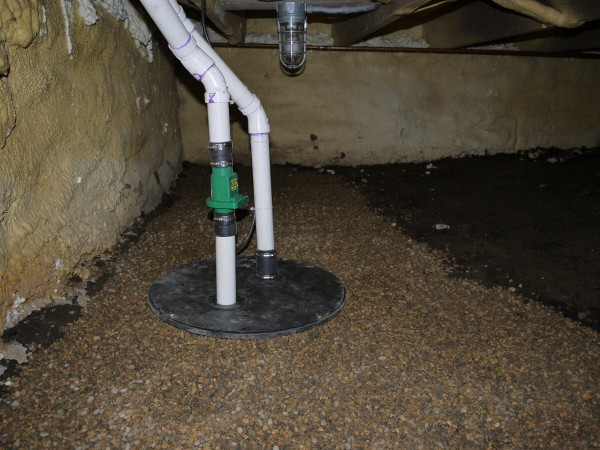
This was my complete guide on how to install a sump pump in a crawl space or basement. This is pretty simple to implement and I would say that this technique surpassed my expectations real good. Make sure to leave a comment below and you can also share any problem you faced after you have tried this. Good luck!


